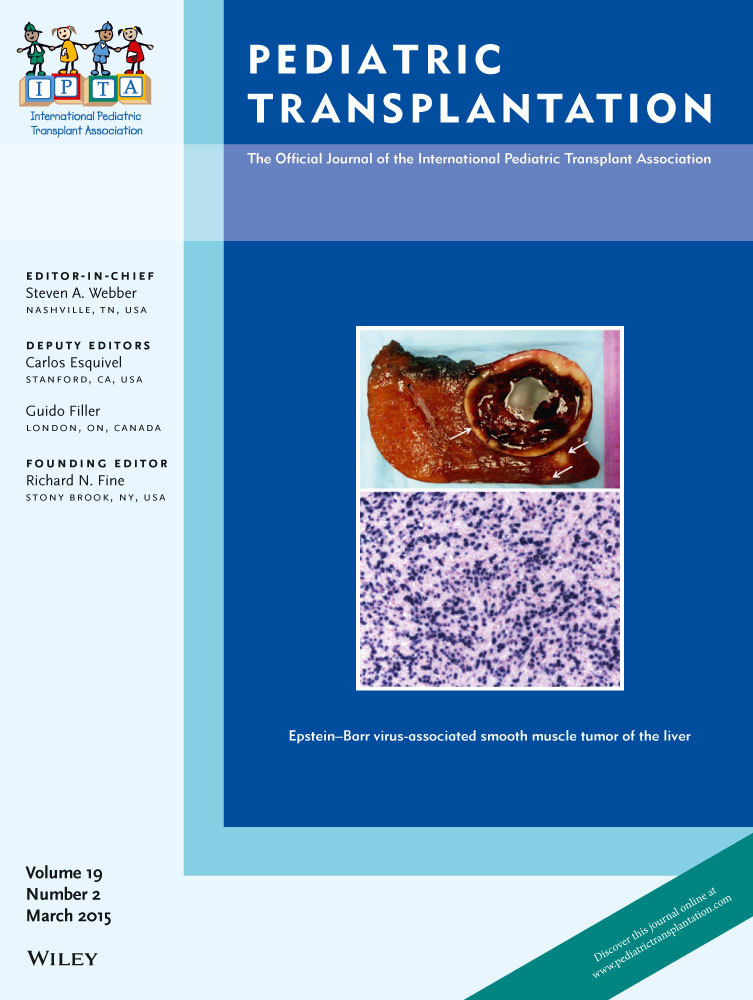Longitudinal renal function in pediatric heart transplant recipients: 20-years experience
Abstract
This study was initiated to assess the temporal trends of renal function, and define risk factors associated with worsening renal function in pediatric heart transplant recipients in the immediate post-operative period. We performed a single-center retrospective study in children ≤18 yr receiving OHT (1993–2012). The AKIN's validated, three-tiered AKI staging system was used to categorize the degree of WRF. One hundred sixty-four patients qualified for inclusion. Forty-seven patients (28%) were classified as having WRF after OHT. Nineteen patients (11%) required dialysis after heart transplantation. There was a sustained and steady improvement in renal function in children following heart transplantation in all age groups, irrespective of underlying disease process. The significant factors associated with risk of WRF included body surface area (OR: 1.89 for 0.5 unit increase, 95% CI: 1.29–2.76, p = 0.001) and use of ECMO prior to and/or after heart transplantation (OR: 3.50, 95% CI: 1.51–8.13, p = 0.004). Use of VAD prior to heart transplantation was not associated with WRF (OR: 0.50, 95% CI: 0.17–1.51, p = 0.22). On the basis of these data, we demonstrate that worsening renal function improves early after orthotopic heart transplantation.




